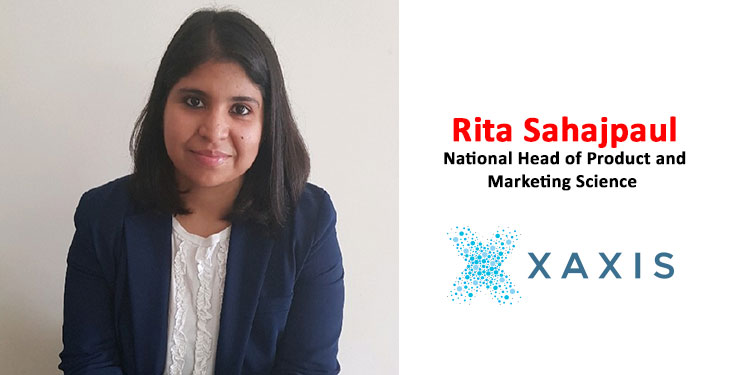Audio is currently undervalued and underutilized in India. There needs to be more education, and more measurement tools, says Rita Sahajpaul, National Head of Product and Marketing Science at Xaxis India.
In India, programmatic audio is still in its nascent stages. However, the 2019 market saw entry of global music giants like Spotify, YouTube and Amazon Music, point to the medium’s great potential.
While the ‘explosion’ in adoption has yet to happen, there are signs that the industry is moving in that direction. One positive indicator is that listener’ numbers are on the rise across the country.
We already know that
Given the ongoing lockdown, this music listening has only increased, with music streaming platforms seeing up to 40% increase in Monthly active users according to similar web. People are also spending more time on the platforms which have seen a surge of 42% in time spent in March alone. This increased time spent is consistent across the entire day, but afternoons & late nights seem to have peaked with 52% and 80% increase in listening respectively. There is, naturally, an overlap between audio listeners and video viewers. A lot of target audiences we have for audio are already fervent video viewers. They are smartphones users; they are a tech-savvy bunch.
According to TechSci Research, the Indian music streaming market is touted to be worth $150 million, The firm also estimated that the market will reach $400 million by 2023. Now, platforms like Spotify, Gaana, JioSaavn, YouTube Music, Google Play Music and Apple Music are jostling for space. Most platforms have un skippable ad formats and the Audio content is also highly curated coupled with licensed music making these premiums platforms one of the safest for ad placement. Podcasts could pave the way for brand communication amidst lockdown
Yet, the audio industry still needs to overcome one major hurdle: a lack of understanding of the impact of audio advertising.
Measuring its success is key
Audio is currently undervalued and under-utilized. There needs to be more education, and more measurement tools. While DSPs (Demand side Platforms) have traditionally been developed for display and video formats, they are now developing features to meet the nuances of the audio format, buying and optimizing currencies. Publishers need to send the right signals to the buying platforms and third-party measurement providers, so that the intelligence around the ad-exposure can be used to measure the ad-effectiveness.
Make audio part of your omnichannel campaign strategy
Audio can provide the most value if it becomes part of an omnichannel campaign–when fluidity between the different mediums, whether video, display, audio or even DOOH for that matter, is achieved.
The media consumption habits of consumers are considerably changed in recent times, however, understanding the habits in regular or new normal times can help brands plan for an optimum mix of various formats to ensure maximum ad-effectiveness. “For example, capturing the mood of these days, brands can deliver engaging messaging to their consumers via uplifting playlists and podcasts in addition to the video or display formats. When people slowly ease back post COVID, tapping the morning school-run or office commute through an audio format, brands can further amplify the messaging through video in the evening, or tapping DOOH ad-exposure followed by an audio ad can create unique touch points for brands.
As programmatic audio becomes increasingly adopted by Indian buyers and publishers the next step for programmatic companies is to help advertisers achieve ‘outcome buying’, in other words, help advertisers optimize programmatic media investments for outcomes such as completed listens or improved brand-recall, and achieve verifiable results.
Authored by Ms. Rita Sahajpaul, National Head of Product and Marketing Science – Xaxis India.
















